Photodynamic Therapy
Photodynamic Therapy (PDT) is a non-invasive treatment for superficial skin cancers (BCC and IEC), pre-cancer sunspots as well as acne and ageing skin. PDT is commonly performed in cosmetically sensitive parts of the body, as well as lower legs (which may heal poorly after the surgery).
PDT utilises photo-active drugs, oxygen and light to create a photochemical reaction that selectively destroys cancer cells. There is minimal patient downtime and excellent cosmetic results with this treatment.
High Efficay
Non surgical treatment of superficial skin cancers and pre cancer sunspots highly successful outcomes
NOn surgical
Best cosmetic results without any injections, scalpel or suturing
Safe
targeted treatment Utilising light + naturally occurring aminoacid photosensitisers
What is the process of treatment?
Photodynamic Therapy (PDT) is a non-invasive treatment for superficial skin cancers (BCC and IEC), pre-cancer sunspots as well as acne and ageing skin. PDT is commonly performed in cosmetically sensitive parts of the body, as well as lower legs (which may heal poorly after the surgery).
PDT utilises photo-active drugs, oxygen and light to create a photochemical reaction that selectively destroys cancer cells. There is minimal patient downtime and excellent cosmetic results with this treatment.
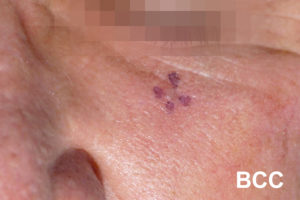
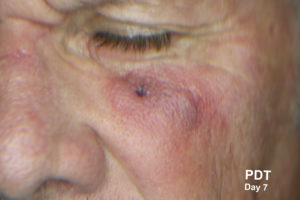
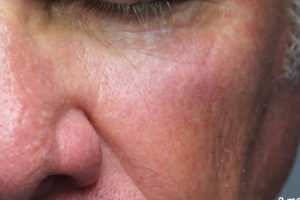
What can I expect during treatment?
During the illumination phase, you may experience a burning or stinging sensation. Pain after treatment is short term and seldom lasts for hours or days. Most of our patients develop a mild to moderate inflammatory reaction. Your skin may appear swollen, particularly around your eyes and mouth for 2 to 3 days. Redness, swelling and pustules after PDT are normal and usually resolve within 1 to 2 weeks. The worst of this is typically over by day 7. Some people feel comfortable returning to work after 5 days but if you have a public-facing job, you may prefer to take 1 to 2 weeks off. Makeup can generally be applied 5 to 7 days after PDT.
Skin cancers usually require 2 sessions of treatment, 7 days apart. Doctor will examine your skin 3 months after the treatment to assess the response to PDT. In about 10% of patients with stubborn skin cancer, not responding to PDT, doctors may repeat the skin biopsy or recommend surgical treatment.
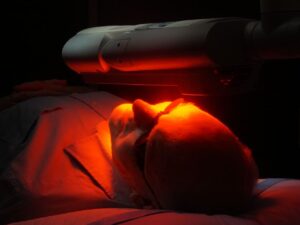
What are the side effects/ complications?
PDT is quick and easy and has very few side effects. The most common side effect (in one out of 10 patients) is a painful and burning sensation during or soon after the light exposure, lasting for a few minute to hours and resolving on the day of treatment. The local reaction are generally mild and usually pass, however, treated areas can appear red and swollen with some peeling for 2 to 7 days.
One percent of patients have an exuberant response to PDT and experience marked redness , crusting, ulceration, weeping or blistering and changes to the colour of skin. Temporary swelling of the lips and tissue around your eyes can occur for a few days.
Darker pigmented patches called liver spots can become temporarily darker and then peel off leaving normal skin. (This usually occurs over seven to ten days).
The treated skin lesion may blister and ulcerate as the cancer cells die off. This may take several weeks to heal. Some redness, swelling and crusting is expected after the procedure but generally will subside after a few days. Occasionally, more severe swelling, blistering, weeping or itching may occur.
After the PDT, your rejuvenated skin may appear pink for several weeks or occasionally develop brown post inflammatory pigmentation. These are usually temporary but may last longer if the skin is exposed to the direct sunlight. Patients with rosy complexions, and those with rosacea, may find that the redness and sensitivity takes many weeks to settle after treatment.
Scarring is generally minimal but can be moderate. Loss of pigmentation may occur sometimes and can be permanent, however, aesthetic result of PDT is always superior to surgery.
Rare side effects are anxiety, headaches, dizziness, migraines, thinning of the skin, widespread skin rashes, nausea, tiredness, influenza-like symptoms, skin infections and fever above 38 degrees. Contact the clinic if you are noticing any of these severe symptoms. There are no long term side effects reported with the use of PDT.
➮ Certain medications could make your skin sensitive to sunlight. These drugs could intensify your skin reaction after the PDT. Do not forget to disclose all you medications and medical problems with the doctor.
➮ PDT may cause recurrence of cold sore infections. If you have a history of cold sore, your doctor may recommend a cold sore talet on the day of your PDT to prevent cold sore.
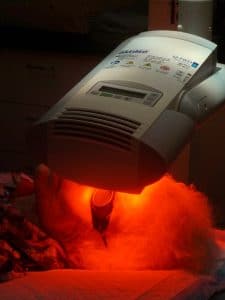
Aftercare
Remove the residual cream from your treated skin using soap and water. Moisturise your skin every few hours until it has healed. Moisturising can help soothe your skin and reduce crusting after the treatment. If your skin feels tight, moisturise it more frequently. Consider refrigerating your moisturiser – this can have a soothing effect on your skin. Moisturising creams, e.g. Cicalfate or Vaseline, Dermeze Treatment Ointment and QV Intensive cream are suitable after the PDT when the skin is still very sensitive. Cold water spray can also be used to reduce the burning pain. Your doctor may prescribe analgesics to reduce the pain.
Cleanse the skin with a gentle cleanser (e.g. Cetaphil Gentle Skin Cleanser) at least twice a day. Cleansing the skin will reduce crusting and keep the area clean. Do not wear any make up for a couple of days after treatment.
If you feel that the area is becoming very red, hot, painful and weeping a lot, please contact the clinic.
It is important to stay indoors, or cover the area, avoiding strong window light, during the first 2 days.
Regular application of sunscreen is extremely important during the first few weeks after PDT, while the skin is still sensitive to the daylight. Sunscreens should be applied, both indoors and outdoors, for maximum protection. We recommend mineral sunscreens containing zinc (e.g. Invisible Zinc or Ultra Facial Defence). Zinc has healing properties and is helpful for recovering skin.
Your skin may remain pink for up to several weeks after you finish the treatment. Topical Niacinamide creams, such as Lipikar Baume or Metacell Renewal B3, can also help your skin during the rejuvenating phase.
Arrange an appointment to see the doctor, four weeks after your treatment. Take pictures of your treated skin 3 days and 7 days after the PDT. These images will help identify the concerning spots and response to the treatment. Any residual sunspot after the treatment will require biopsy and possibly a surgical excision.

Any Questions?
Contact our clinic if you have any questions about Photodynamic Therapy. Our friendly team will respond to your queries: info@qskin.com.au 3352 3827


